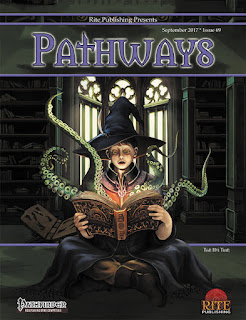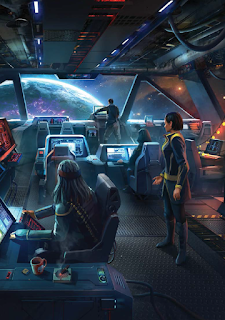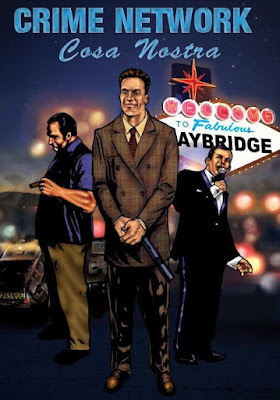Welcome to a review of
Mermaid Adventures, a complete role playing game (RPG) which was formerly available in portable document format (PDF) at DriveThruRPG.com and RPGNow.com.
Mermaid Adventures was brought to the surface via Kickstarter to the tidy sum of just over 5k internet bucks. This review concerns the non-revised version which is no longer available, but since the premise is the same, you can take a closer look at
Mermaid Adventures revised, by clicking the affiliate links in this review.
Indeed, there is a growing market of games aimed at introducing a young (or younger) player base to the fold of RPGs.
Mermaid Adventures is one such, but there are a few pleasantries about this game which distinguish it from some of the games I’d happened upon over the years. We need not play the name-games-game, but some of these “other creators,” should consider taking some notes.
Disclosure: This review contains affiliate links I receive a token % if you purchase something from the landing page. It's one way to show your support of this blog, and its content. Sincerely, thank you for that support.
Clicking off the first couple of pages on my PDF copy the first thing to be appreciated is that the games list of play testers, include members of its target audience. Ahem, “other creators,” ages four to eleven. While you might not think this is such an innovative idea, you’d be surprised at how many RPGs while designed for kids, fail to include the target audience (or even playtesting at all) in the mix. Just saying…
I was impressed by the overall organization and design of this book. Certainly,
Mermaid Adventures is not a large volume at just over 100 pages cover to cover, but everything contained therein feels or seems to be where it should be. I’m not exactly certain where this sentiment comes from, but my ego tells me it’s because: everything is where it should be! The game is properly organized; I’ll leave it at that.
The illustrations are bright, colorful-as well as plentiful and should appeal to the young gamer, more specifically I would argue girls, a bit more than boys, under the age of ten. Tables are well placed throughout with the pertinent information to each section. The book is structured without a multi-column format, which makes the print larger than typical as well as easy to read. For the most part
Mermaid Adventures passes the eye test, so let’s move the review to what I like to call “the fiddly-bits,” otherwise known as game content and mechanics.
Creating a character in
Mermaid Adventures is broken down into four steps. The first of which is picking a species of Merfolk from a list of eight varieties. Each type of Merfolk has some special abilities and provides the starting base for character attributes. For example, Lobsterfolk have a hardened body, Rayfolk can flatten their body, while the Jellyfolk have a see thru body, in the right lighting, etc. etc. Overall, each Merfolk is pretty interesting in the range of available abilities to start with and so each has their appeal in playing them.
Each Merfolk starts with a base number for each of the four character attributes with character creation. With step two, players receive five additional points in which to distribute among the character’s attributes as they desire. The Attributes are Body, Mind, Charm and Luck. As you might surmise, all conflict or contest resolution will be determined on these scores and will aid the number of dice rolled relevant to the situation. Each attribute, fits and will be used in game, exactly where you would intuitively guess it should.
Step three of character creation is the option of rolling on random charts to determine superficial things about a character; hair color, clothing etc-etc. This section is a bit of optional fluff, whether characters roll or the players determine it themselves is left to the Navigator (GM). Any good parent knows, you don’t tell a four year old the color of her character’s hair. She tells you. That is that and to quote the late great Professor Snape, “Obviously…”
The last and final step of character creation is selecting four qualities which will help make each character unique. Qualities are character perks, which will impact game rolls. These extra qualities are in addition to those awarded with the type of Merfolk that has been selected. The quality: Sneaking will give a bonus success, when attempting, you-guessed it- do some sneaking!
Mermaid Adventures offers a decent sized list of qualities, including magical qualities if you wish to include magic with your game, which will assist players, while providing some additional utility to each character.
Mechanics in
Mermaid Adventures involve the use of black and white six sided dice and is a D6 system with a bit of a tweak. Fear not, if you are a Seattle Seahawks fan (like this reviewer) and possess only green and blue dice. If I can figure this out, I have faith that you will as well.
Success on a specific roll (or how many are required) is determined by the Navigator (GM). The difficulty level (1-5) determines the number of black dice rolled, while the characters Ability and Quality determine the amount of white dice rolled. Success for either is rolling a 4, 5, or 6. Overall triumph on a specific task is getting more counted successes on the white dice, than the black.
My one criticism is that overall the mechanics for dice rolls are a bit too fancy for my taste and I think the four, five and six year olds might agree with me: small hands and all. There’s nothing wrong with setting a target number a notch higher (perhaps 3-10) and requiring some straight rolling. Let’s not forget it’s hard enough for a six year old to keep a dice roll on the table let alone wield more than one successfully. The four year old might forgo rolling altogether and wonder instead what a handful of dice tastes like! Luckily no doubt the navigator will be there to navigate and forgive me
Mermaid Adventures I kid, yet I’m serious. Add to this comparing success vs failure between the two toned dice and as I said it’s just a bit too fancy. I’m sure this system works but something simpler could work as well; and to be clear this is not a criticism of four to six year olds…
I couple of nice sections are the pre-generated characters which the players could utilize or a navigator could use as non-player characters (NPCs) and the sections that stat out creatures of the sea natural and fantastical.
Progress Points are the game’s experience point system. As a character in
Mermaid Adventures progresses they get points awarded by the Navigator after a session. The player can choose how to distribute those points to build their character and for the most part the system is set up for rewards that will happen once a single adventure is concluded. Keeping the target gamer in mind this is a very simple and effective system.
(This review is property of Kenzer and Company and republished here with permission. Mermaid Adventures was supplied free of cost for the purpose of review)
Advice sections for the Navigator and role-playing are pretty basic stuff for an experienced gamer-but no doubt credit is due for including them. There is also a cute story at the beginning of the book which (gives a narrative of play) I found delightful enough to read to my daughter as well as the section which gives a good example of what gameplay will be like. I like products that boast being a complete RPG to maintain key sections, which explain the role of players and basics of roleplaying-it just makes good sense-and
Mermaid Adventures ties it all together with a creative approach.
The final chapter of
Mermaid Adventures consists of five short adventures. Beside an interesting mix of adventure, I would say nothing ground breaking here, however something to consider, is again-the target gamer. The adventures maintain a basic approach at introducing RPGs to a younger gamer. Dare I say a gamer who’s attention span is a bit more easily influenced to distraction and who’s, (Are we there yet?) mentality would be more pleased at arriving sooner to the conclusion of the adventure, rather than later. Two dolphin fins up for this section.
To close,
Mermaid Adventures provides a good introduction to roleplaying. As a product it does a good job of not forgetting who this game is designed for. If you skipped ahead to the final couple of paragraphs of this review: Kids! This game is for kids. The layout is crisp and the game rules are easy to follow. The art is very appealing or at least my seven year old hasn’t stopped bothering me about playing it, since peaking over my shoulder, whilst I was thumbing this review.
Speaking of which, the five sample adventures are certainly enough to get a Navigator started. So it looks like I will be making a visit under the sea relatively soon. Perhaps we’ll see you there!




















